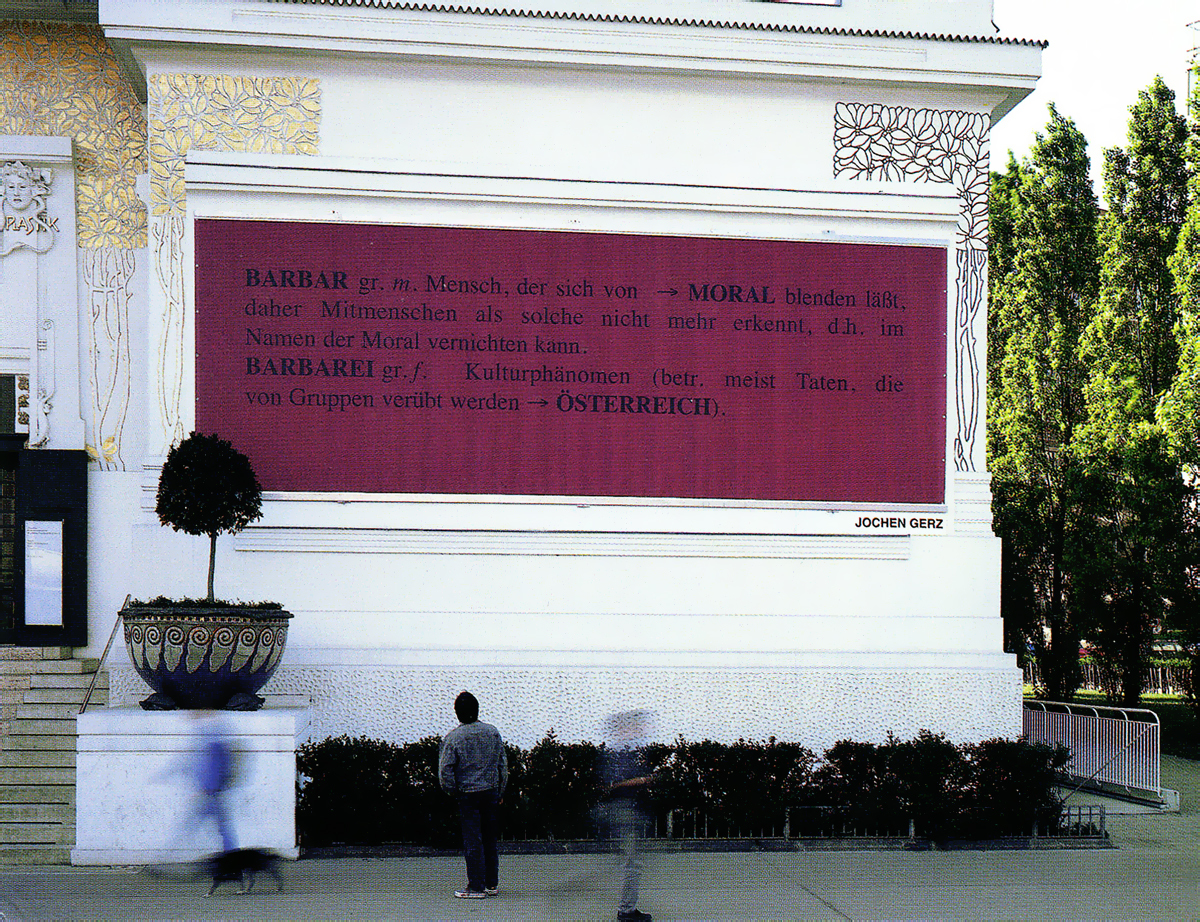Der Eintrag
The Entry
CR 106. Year 1993

- DE
- EN
Barbar gr. m. Mensch, der sich von > Moral blenden läßt, daher Mitmenschen als solche nicht mehr erkennt, d.h. im Namen der Moral vernichten kann.
Barbarei gr. f. Kulturphänomen (betr. meist Taten, ...
Gerz is not only concerned with memory as a form of cultural knowledge. For him, memory is rather the mainspring of human uncertainty and self-questioning. And it is only in this continual as self-induced uncertainty that there is, paradoxically enough, a chance of developing a self-awareness that is not in permanent danger of de-generation into self-deception, whether in the form of a superiority complex or an inferiority complex. Historically, self-deception has always had catastrophic social consequences, and so, according to Gerz, it is not just a matter of remembering, but above all one of making memory relevant to the present situation and of gaining insight into its fundamental importance of an ethics for the future.
Friedemann Malsch 2002
The trust that he places in the public: in its capacity to reflect in the present about the present. This approach excludes from the outset a merely obligatory conclusion about the past. The power to decide and the power to speak are capacities that Gerz accords not only to those participating in his projects but to all citizens... Through this trust—which is the foundation of this approach—relations in the culture of commemoration are restructured. This brings with it a change in perspective that lends remembrance a new social dimension.
Werner Fenz 2016
Categories
Keywords
Work in Public Space
Duratrans slide projection, 181. 5 x 598.5 cm, aluminum light box, 183 x 601 x 20 cm Billboard
A text structured like a dictionary entry on the terms Barbar/Barbarei (barbarian, barbarism) is visible in a light box and on a billboard.
Exhibitions
Düsseldorf 1993. Suhl 1993. Wien 2000
Bibliography
I: Düsseldorf 1993, p. 19. Bolzano 1999, p. 126
II: Red. 13, 1993. Steinhauser 1993, pp. 104-107
V: Wiese 1995, p. 106. Mommsen 1997, Cover, pp. 225, 241